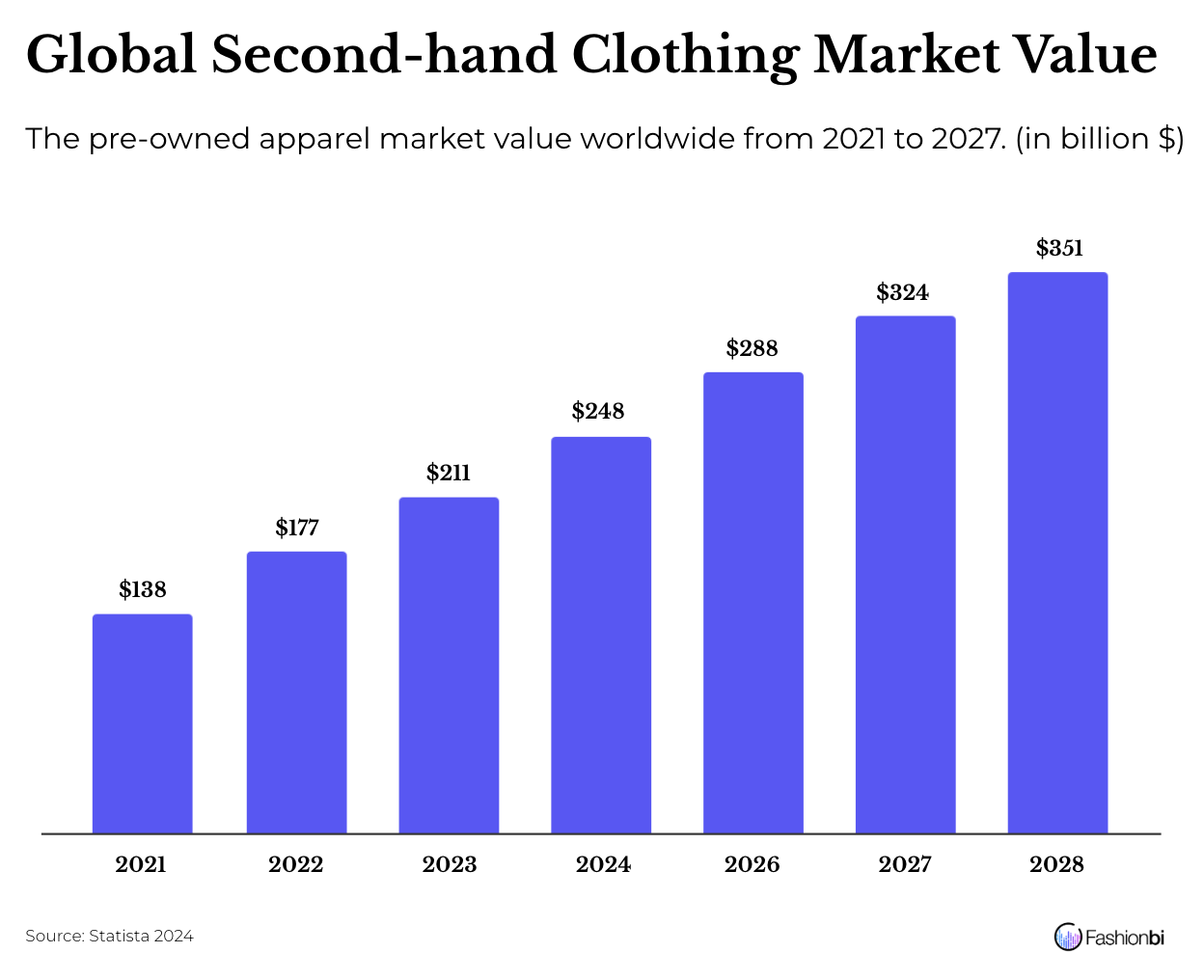Table of contents
Online reselling market is the fastest-growing source for the second-hand fashion market. With concerns over sustainability, cost-of-living issues, and the widening digital world, the online pre-loved is getting more attention. The pre-owned clothing market accounted for $177 billion in 2022 and is expected to reach $351 billion by 2027. Whereas the digital rental fashion platform is at $2,27 billion and is estimated to touch $6,24 billion by 2033 with a CAGR of 10,6%.

Increasing Exclusivity
The retailers can grow their product exclusivity by surfing and selling archival products from the luxury industry to build a strategy for preserving the cultural heritage standards of the heirlooms. They can work on a narrative that has circularity as the main element. With this, the brands, along with retailers, can introduce a new way of sustainability - repair and preservation.
The storytelling has to be more historical. Encouraging customers to take care of their newly-purchased products as heirlooms that can be given to their family’s next generation, conducting educational workshops on preserving heritage products, and partnering with archival and historical experts are some of the ideal approaches.
TikTok launched the sale of second-hand classic cult products such as bags, sneakers, and clothes on its TikTok Shop. Impossible Kicks from the US has commenced its own Vaulted Collection to sell sneakers that are no longer produced. Moda Operandi of US teamed up with Rebag to host a trunk show online featuring vintage bags. Amazon has its Pre-Loved Fashion where it sells selective jewellery, clothing and accessories. It also collaborated with Hardly Ever Worn to resell luxury fashion items.
Creating Community
With the resale market becoming a new phenomenon in boosting the global sharing economy, it is crucial to introduce a community to build trust and loyalty among consumers. The retailers can create a big peer-to-peer community by engaging with the customers’ needs while building a strong value.
Organising entertainment and other activities with the help of a community can enhance customer targeting, awareness, and consideration. The retailers and brands have to interact and explore new strategies with the customers by launching ways such as social feeds, and chat boxes. They have a plus point while coming to build a domestic community by offering a one-day delivery.
The rental platform of the US, Pickle, allows its customers to share the products with their fellow customers. Depop lets its customers interact with each other during transactions and gives its members access to pick up the delivery from its centres.
Transparency on Value
As the demand for pre-owned products increases, the online prices are getting inflated. Therefore, e-tailers have to be more transparent about their pricing structure and values just like the case in sustainability.
Retailers and brands have to release a transparent structure of price through a detailed explanation of the product quality, value, and heritage it carries to sustain customer loyalty. They should work on giving the consumers access to all the activities and identities around that product.
Wayfair from the UK has included a new category featuring products with sustainability certifications such as LEED v4 and Green Squared. Nuw launched a model where clothes are treated as a currency that allows its customers to get gold and silver coins on every product they upload on the website. The coins can help them in redeeming an item at a service and shipping charge of $0,99.
Eliminating Retail Frauds
Second-hand market is also facing frauds and thefts which leads to criminal groups stealing the products and selling them illegally online. Online e-commerce has witnessed around $41 billion in 2022 due to payment fraud and is expected to get $48 billion by the end of 2023. Among the highly-in-risk products, sneakers stand 162% to be likely in risk of getting stolen. It is also estimated that there are 40 million fake timepieces sold every year worldwide, with a profit of $1 billion.
Brands and retailers have to release digital IDs for the products and indulge in AI and machine learning to build a diagnostic technology that can detect a fake. Here, it would be useful to loop in thyroid-party service providers to find and eliminate counterfeit products.
Pangaia from the UK presented the Pangaia ReWear program that provides digital IDs for the products through a QR code. Chloé has Chloé Vertical which allows the customers to scan the product’s NFC code to get the identification number which can be used to resell the product on a microsite produced by Vestiaire Collective. Carousell of Singapore launched a service where it inspects the working condition of pre-owned mobile phones and gives accurate pricing.
Visual Marketing
Consumers are demanding to shop the products without any second thoughts. They want to be more clear on what they are purchasing. To give that assurance, e-tailers can incorporate machine learning, AI, and image surfing technologies. It will assist the consumers in having a seamless shopping experience.
As the products sold here are pre-owned, the retailers can work more on image search technology to help the customers find the product easily. They can also work on language and text preferences while keeping the images as the main way of communication. The 3D version of the product, easily usable navigational tools, and clear product pages will help.
Poshmark has Posh Lens where the shoppers can search the item with the reference images. Klarna from Sweden uses AI on its mobile app to fast-track the selling process by auto-filling product pictures and details.
Cover Image: thredUP packaging house, courtesy Packaging Strategies.